Mention the name, Hyundai, and many American motorists will give you a blank stare. For its first two decades in the U.S. market, the Korean carmaker offered cheap, low-quality and largely forgettable products like the original – and oxymoronic — Excel. But if you’re one of those giving Hyundai the cold shoulder, it may be time to think again.
Along with Korean sibling Kia, Hyundai has delivered a series of surprises in recent months. They topped the charts among mainstream brands in J.D. Power’s latest Initial Quality Study, as well as AutoPacific’s Vehicle Satisfaction Awards. And one good reason is the Hyundai Tucson.
The second-generation crossover, launched in 2009, was stylish, sporty and surprisingly well-equipped. Now, Hyundai is back with a third-generation Tucson, and with the compact crossover segment becoming increasingly competitive, we headed off to Minnesota for a first drive to see how it stacks up.
(Koreans score big in new Vehicle Satisfaction Index. Click Here for more.)
As with the latest Sonata, the Tucson adopts the latest take on Hyundai’s distinctive design language, now referred to as Fluidic Sculpture 2.0. Critics have faulted the Korean maker for taking a more conservative approach with the midsize sedan’s recent update. Not so with the 2016 Hyundai Tucson. It retains its visual edge, if anything, becoming even bolder and more aggressive with a kinetic stance enhanced by a rising beltline and flared wheel wells that make the Tucson appear to be constantly in motion.
For 2016, the crossover gets new twin projector headlamps with LEDs offered as an option. They frame the familiar Hyundai hexagonal grille, while the foglamps have been pulled to the corners to further enhance the feeling of width. LED running lights complement the package.
From the rear, there are revised LED taillamps, a newly integrated spoiler, a wide bumper and chromed dual exhaust tips. There’s also a new “smart” tailgate that makes it easy to open if your hands are full. While some recent entries into the segment, such as the latest Ford Escape require you to do a dance, waggling a foot under the back bumper, you simply need to walk within three feet of the 2016 Tucson’s tailgate with the key in your pocket for the power hatch to open.
Other nice design touches include the new, low-profile roof rails, the available 19-inch wheels, and the optional Panorama sunroof that stretches virtually the entire length of the Tucson’s passenger compartment.
Hyundai’s focus on Fluidic Sculpture has certainly turned heads and brought shoppers into the showroom, but once you drive off with a vehicle, it’s the interior you really have to live with. And there the new Tucson delivers, as well. Company stylists suggest they were influenced by the open-winged designs of the great Eero Saarinen. What that translates into is the feeling of spaciousness, thanks to subtle changes, such as moving the vents to the far corners of the instrument panel.
Overall, there is a level of craftsmanship that clearly moves Hyundai up a notch. While Hyundai still positions itself as a “value” brand, and you can find details and features that you might not expect, including optional heated and cooled front seats and heated second-row seating. Those 60/40 split rear seats now also recline and offer a center armrest.
Seating, in general, is quite comfortable, and the front buckets offer plenty of bolstering to keep you in place during even hard cornering. You can upgrade to leather on the Limited. But even lower-trim models receive a nice touch, the steering wheel and shifter both leather-wrapped.
We drove two different versions of the 2016 Hyundai Tucson. Our front-drive model was fairly stripped down, but still featured a compact LCD display for operating infotainment features. The all-wheel-drive Limited added such niceties as an 8-inch display with built-in navigation. We found the latest voice control system a bit quicker and easier to use than with the gen-2 Tucson.
(Hyundai replaces GM as top NFL sponsor. Click Here for the surprise story.)
Nose-to-tail, the 2016 Hyundai Tucson measures 173.2 inches, about three inches longer than the outgoing model. It’s also one inch wider, at 71.7 inches. The wheelbase is 103.9 inches and the crossover stands 71.7 inches tall at its peak. This all translates into a surprisingly roomy cabin that can handle nearly 62 cubic feet of cargo with the rear seats folded down.
The 2016 model now uses more than 50% high- and ultra-high-strength steel. That serves several purposes, minimizing the weight gain from that larger body while improving crash performance – with Hyundai expecting a five-star rating from NHTSA and a Top Safety Pick+ endorsement from the Insurance Institute for Highway Safety. It also translates into a stiffer vehicle with better road manners, especially on some of the rough back roads we traversed during our run through Minnesota and Wisconsin lake country.
To further improve ride and handling, the 2016 Hyundai Tucson opts for MacPherson struts up front with a new multi-link rear. There also are hydraulic rebound stoppers up front to reduce harsh jounce on rough roads.
While not the sportiest model in its class, the 2016 Hyundai Tucson delivers a more planted ride than many of the segment’s best-known offerings, such as the Ford Escape. There is only modest – and predictable – body roll, and even on rough dirt and gravel roads, the Korean crossover maintains its poise.
The base SE features a naturally aspirated, 2.0-liter four that makes an acceptable 164 horsepower and 151 pound-feet of torque. But the rest of the 2016 Tucson line-up is powered by a turbocharged 1.6-liter inline-four making 175-horsepower and 195 pound-feet of torque. There’s an Eco trim that helps boost mileage to 26 city, 33 mpg highway and 29 combined. Otherwise, expect 25/30/27, a 3 mpg jump from the old Tucson.
Unlike some competitors, Hyundai opted not to go with a CVT, instead opting for a dry-clutch DCT transmission. We were skeptical, at first, recalling the problems other makers have had with this approach. Our worries were unfounded. This double-clutch transmission provided both intuitive and incredible smooth, shifts coming almost imperceptibly under even the most aggressive passing maneuvers.
If we had one wish, we’d nudge Hyundai into adding paddle shifters to the package.
On the downside, we did experience a bit of torque steer under aggressive launches with the front-drive package. The good news is that this problem all but vanished with the all-wheel-drive Limited. That system not only can shunt most of the engines torque front-to-back, as needed, to maximize traction, but there’s also a brake-based torque vectoring system that can improve handling in tight corners.
On the whole, the 3,710-pound Tucson has a nice launch feel, but at highway speeds you start to feel like the little I-4, despite its turbo, strains just a little. That said, you seldom here it grunting. Hyundai engineers have crafted a surprisingly quiet package.
One of the key targets for the 2016 Hyundai Tucson was to deliver a broad array of passive and active safety features. That starts out with a more crashworthy body structure, but Hyundai also offers a suite of advanced safety technologies such as Lane Departure Warnings, Blind Spot monitoring, Lane Change Assist, Rear Cross-Traffic Alert, and Auto Emergency Braking with Pedestrian Detection. A number of these features are optional, so it remains to be seen how many Tucson buyers will spend the money. But the crossover’s backup camera now comes standard.
You can climb into the 2016 Hyundai Tucson for at little at $22,700 – plus $895 in delivery charges. The starting point for an all-wheel-drive SE is $24,850. Realistically, we expect to see most buyers to add a few $1,000 to that figure. On the base model we tested, even floor mats added an extra $125 to the price tag. The Limited pushes you into $32,650 in FWD, $34,050 with all-wheel-drive. Our second test vehicle topped $35,000 pretty much all-in.
Surprisingly, some trim levels actually come in a bit higher than competing models such as the Escape and Honda CR-V – but Hyundai officials are quick to point out that the Tucson versions offer far more standard features at each level.
The Korean carmaker is counting big on the 2016 Tucson. After years of rapid growth, its sales have tapered off a bit in recent years, officials lamenting that they simply haven’t been able to get enough crossovers from their global manufacturing network. That pipeline begins to open up this year and next, and Hyundai hopes to sell as many as 90,000 Tucsons next year, more than 50% better than in the CUVs previous peak.
Based on our drive of the 2016 Hyundai Tucson we’d suggest that this is not an overly ambitious goal. The CUV is attractive, well-equipped and loaded with the safety and infotainment features buyers seem to like. There are still plenty of shoppers skeptical of the Hyundai brand. But the latest round of third-party endorsements from the likes of J.D. Power might get them to reconsider.
The new 2016 Tucson is a solid contender that should further redefine the Hyundai brand.
(Hyundai counting on Tucson, other crossovers, to kick-start sales. Click Here for more.)

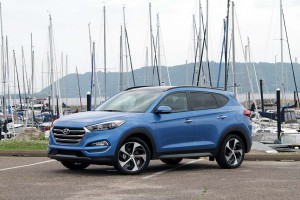
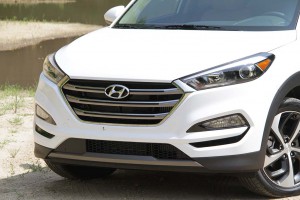
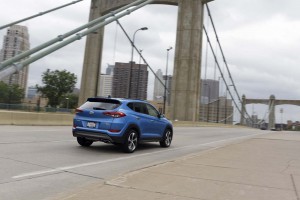
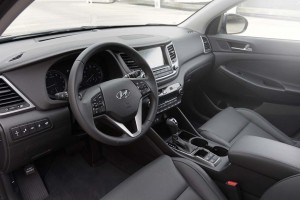
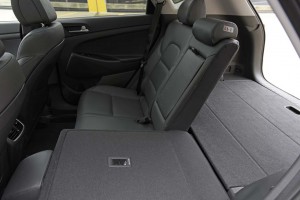
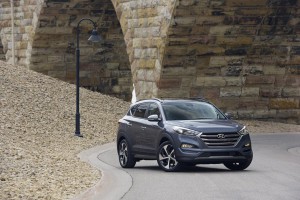
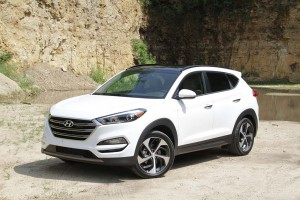
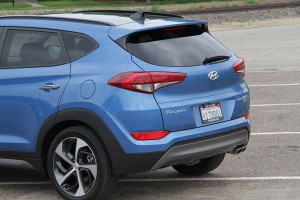
Please test drive a Sonata with cruise control, then you will think twice about Hyundai product.